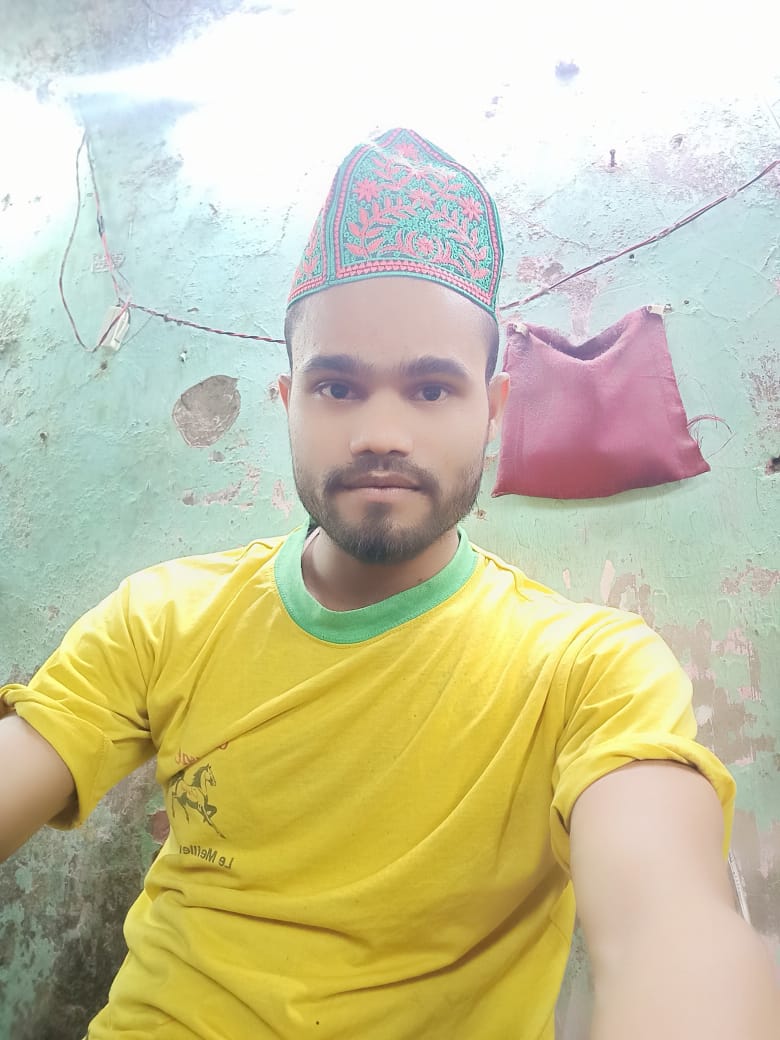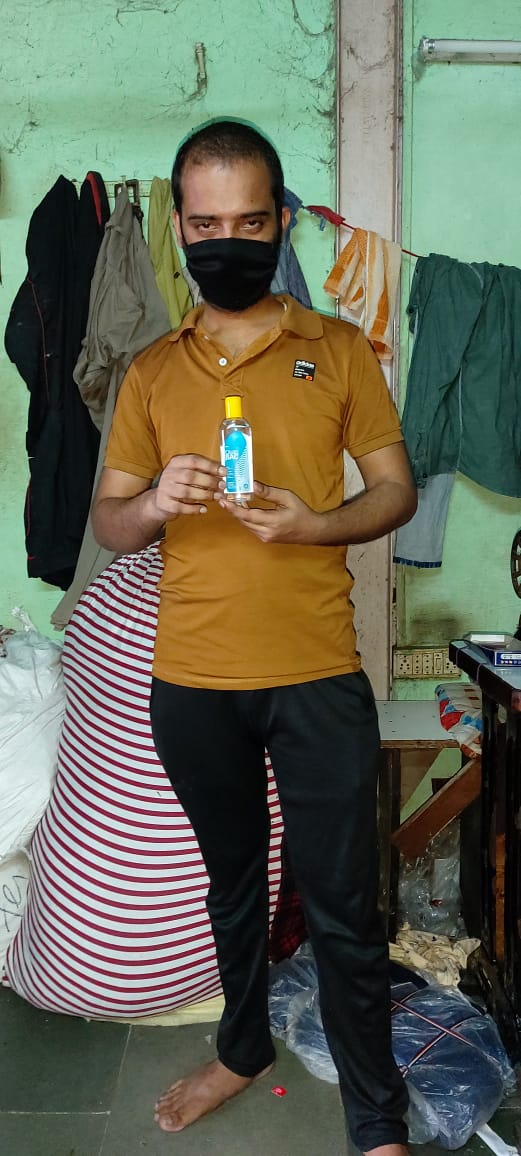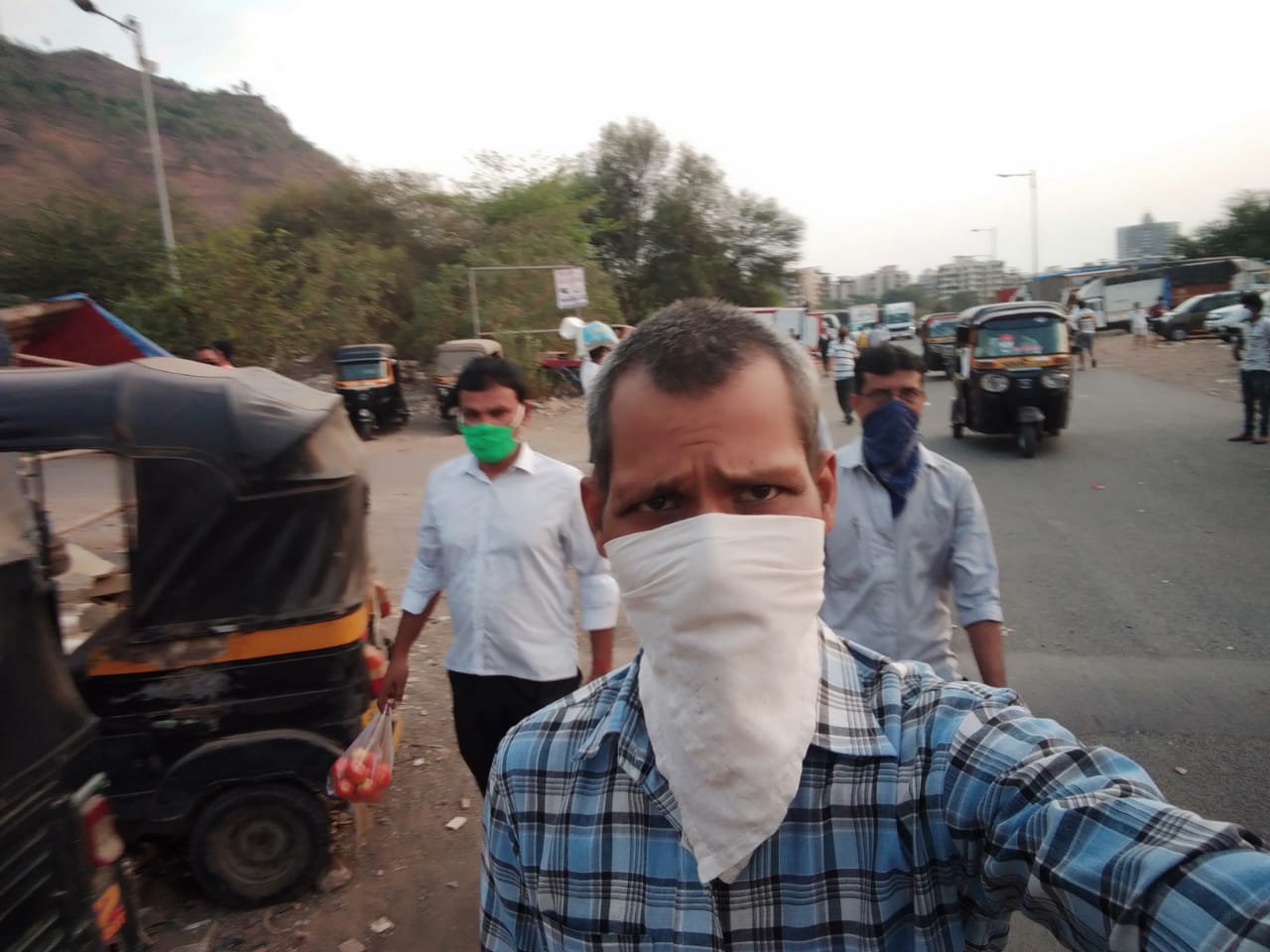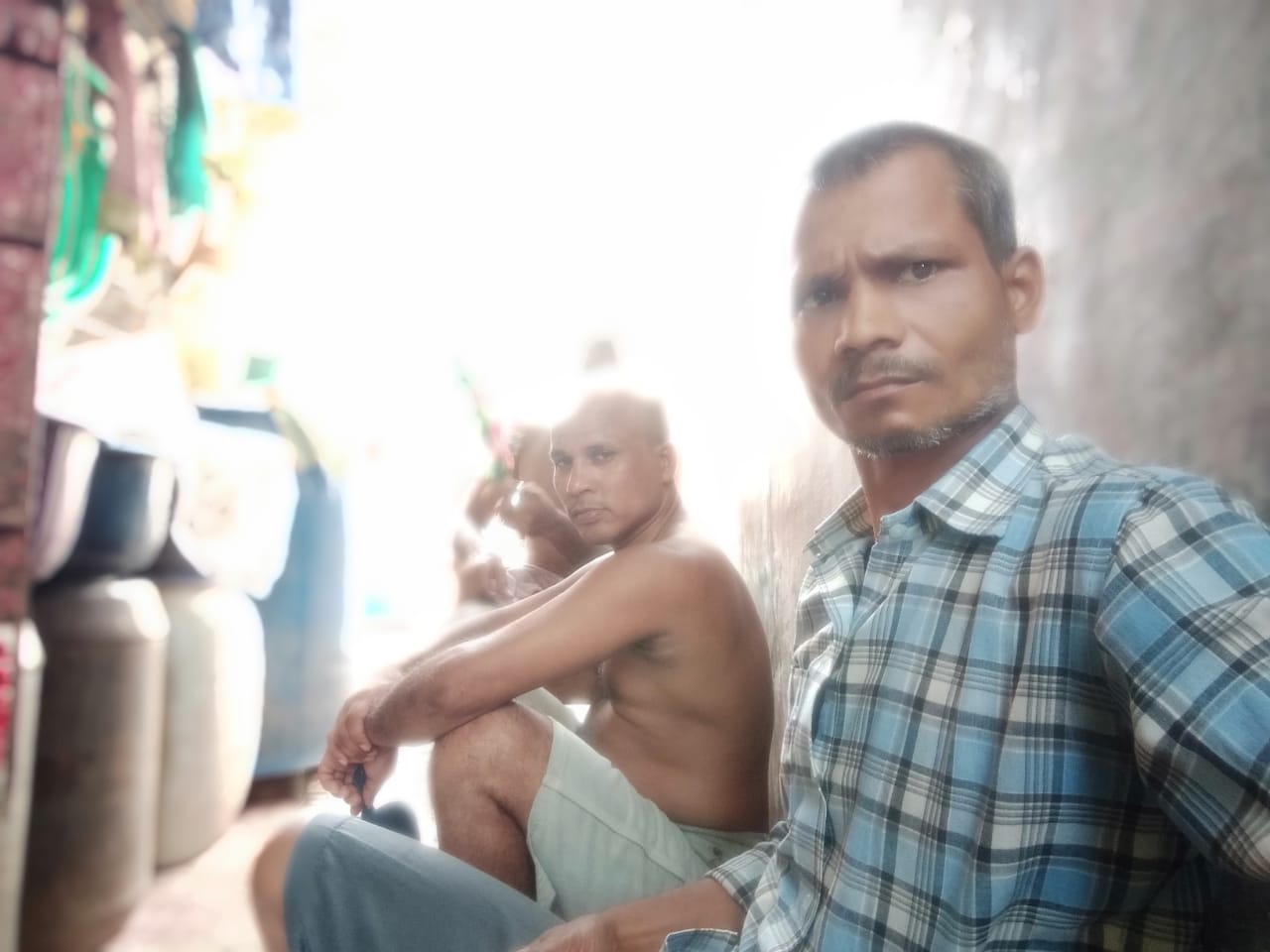
19 May 2020
The lockdown in India caused a humanitarian catastrophe that could have been avoided: several million people suddenly left the cities for the hinterland, sometimes without resources or means of transport. These workers and their families, who are often considered migrants, lead lives that are split between the city, where they can find work, and their village of origin, which is sometimes over a thousand kilometers away. Their mobility is invisible to statistics, and now is the time to recognize it in order to improve their living conditions.
Illustration © Hugh Edby / urbz
Images and stories from the Indian subcontinent, post the pandemic related lockdown, still circulate in the global media. These portray the plight of millions of workers straddling hundreds of miles by foot or cycle, attempting to reach their ancestral villages, stranded in cities or caught en-route on highways. Commentators struggle to articulate or describe what they see. Is it an exodus? A mass migration backwards?
What we are witnessing is a compulsion to move back to the village, for security in times of acute distress. These are not only migrant workers, but also families with children, who may have settled in Mumbai, Delhi and other cities but still think that their home village is a much safer place to be at this time. The connection with the village remains a constant aspect of their lives even after they grow roots in the city.
The response to the COVID-19 pandemic has made visible something that official Indian statistics make invisible: the dual rootedness of millions of working class Indians who have one foot in the city and another in the village. This should not be seen as a problem in itself. However, policies must account for this reality and accommodate the needs of a mobile workforce that sustains both the urban and the rural economy.
Ashok Kumar lives in Dharavi, a hyperdense neighbourhood in the heart of Mumbai, which is known for its artisanal industries and diverse communities made up of successive generations of migrants from the Indian-subcontinent. His father came from a village in Tamil Nadu in the 1950s and, thanks to his hard work and the support of his community, he managed to open a small leather factory, which is now run by Ashok. Their families and activities are partly in Mumbai and partly in their native village of Pattamadai, 1,500 km away, where they regularly return. Due to measures taken by the government to contain the spread of the COVID-19 pandemic, the factory is currently shut, along with pretty much every other business in India. The lockdown was enforced within 4 hours of its announcement by the Prime Minister, which left Ashok and his family no time to pack up for the village. The situation is hard for them, but they are better prepared to respond to the crisis than most in Dharavi. Like his father many years ago, tens of thousands of workers have come to the city, more recently, to earn money that they send back to their families. Some stay with their families or relatives and some sleep in the workshops that employ them. The living conditions are difficult in normal times, with little or no privacy, crowded working and living spaces and shared community toilets. What makes this situation bearable is the knowledge that the village is only a cheap train ride away. But with no trains running and the order to stay back where they are - their home in the village is far out of reach.
The village and the community are the only safety net for those who work in the so-called “unorganized” or “informal” sector of the economy, which represents over 90% of the workforce, encompassing everything from services to industry to agriculture. This is true not only for “migrant workers” but also for families like Ashok’s who have active roots in the city as well as in their ancestral villages.
The back and forth journey from the village to the city is a condition that characterises the lives of hundreds of millions of working class Indians. Yet, it passes under the radar of the national census, which is unable to capture movement. Indian statistics show that an individual is either here or there; more specifically, about 30% of the population is believed to be living in urban areas and 70% in rural areas.
This explains why the central government seems to have been taken aback when millions rushed to bus and train stations within hours of hearing the announcement of the largest and most stringent lockdown on earth. Over a month later, an innumerable multitude, including families with children are still on the road trying to make it back to their villages by foot. As surprising as it sounds, the government was probably unaware of the scale of the phenomenon. The insistence of officials and the media in calling every working class Indian trying to get out of the city a “migrant” tells much about the extent of the misconception.


Mohammad Asif Ansari and Monish Khan are returning to their hometown named Bareilly in the state of Uttar Pradesh, due to work opportunities drying up post the pandemic. They used to work in tailoring workshops in Dharavi over the last three to four years. During that period they would return home once a year. © urbz
For those living between two places, going to the city is rarely a definitive move away from the village. It is rather part of a life-long and even multi-generational strategy that involves cyclical returns. While many were drawn out of their villages by despair, and had no choice, the vast majority of migrants came in search of economic and educational opportunities. For rural youth, the move to the city can also represent an exhilarating journey towards new horizons. As Gyan Prakash notes in his book “Mumbai Fables”, Mumbai city, more than any other, embodies hopes and dreams that have been played out in thousands of Bollywood films.
However, in real life and in people’s strategic choices the horizon doesn’t end in the city. The journey to the city is not an escape from the village as much as a way of improving one’s living standards. Money made in the city is used to rebuild the family house or start a business in the village. The mobility of the working class thus helps both, the urban economy by providing an abundant and cheap workforce, and the village, by providing remittance that supports local development.
The majority of the workers presently immobilised in Mumbai have been living in the city or coming back to it for years. Those who have come relatively recently, are less resourceful and have to depend on their employers for food and shelter. Many are surviving thanks to grassroots support networks and NGOs. Their savings are gone and many don’t have enough credit left on their phone to call relatives. Some local community leaders like Gulzar Waqar Khan in Dharavi are providing prepaid recharge for mobile phones, along with food and soap, saying that this is the only thing that keeps stranded workers from falling into depression. The suffering they endure in the city is echoed by the hardship faced by their families, back in the village, who have to make do without remittances.
Daily wage labourers find themselves in a vicious trap. Not just physically, but also in terms of their status as workers in a complex economy that is many things at once – agrarian and industrial, mobile and rooted. The ability of the silent majority to be many things, besides also being urban and rural, in ways that defy easy dichotomies and categorization, is exactly why a huge sector of the economy gets invisibilized and dismissed as “informal”.
The adjective “informal” has the magical power of bundling everything that doesn’t fit a certain normative into one catch-all label. Unfortunately, this label is highly dismissive and, as anthropologist Keith Hart, who coined the term “informal economy” himself points out, merely says that there is something huge out there that is unaccounted for, which needs to be recognized and understood in a much more nuanced way. Something that statistics seems unable to do.
The present reality is that most poor workers, irrespective of the fact that they are in the organized or unorganised sectors, live in cramped conditions in contested regions of cities because they cannot afford commercial rentals. They rely mostly on the rental stock produced by residents who are themselves seen as illegitimate citizens considered to be ‘squatting’ on public land. From the street vendor to the policeman, from a bank employee to a daily wage labourer, the lack of affordable accommodation pushes all of them to live in a “slum”. And the “slum” is seen to be typically a result of uncontrolled rural-urban migration. Its perceived illegitimacy gives an excuse for authorities to avoid investing in decent civic infrastructure.
All this makes the pandemic a particularly gruelling time for most. Social distancing is a huge challenge, shared toilets are a health hazard and the physical challenges of many people sharing a room to sleep in these contagious times is frightening. Everything is particularly disastrous for those who see their primary home in the village. All these years they managed to deal with the challenging, unfair and difficult conditions in dense urban conditions because they knew they could always go back, particularly during moments of their choice - for weddings, religious festivals and to help in the fields. They could bear with the dense conditions because they were also mobile. In Indian cities, density and mobility are two faces of the same coin. Removing mobility from the equation disbalances the precariousness of existing density levels pushing it into the realm of hellishness.
Though Ashok, the Dharavi factory owner, has spent most of his life in Mumbai, he maintains strong ties to his ancestral village, visiting it at least three times a year, usually travelling by train. His biography includes moments in both places at different points of time. While his early childhood was spent in Mumbai, he was sent back to Pattamadai in the 5th grade when the local school in Dharavi no longer offered classes in his native language, Tamil. He returned to Mumbai after finishing school and became an apprentice in the Indian Railways. When his father passed away, he took over the family business.
One of his brothers moved back to the village to oversee the family’s farm. One son works with him and has started his own digital printing business in the neighbourhood, while the other works as an engineer in Singapore. Ashok and his brothers donated four acres of land in Pattamadai to build a hospital while also setting up a charitable school in Dharavi.


Manoj Kumar Vishwakarma is a carpenter working in Dharavi, Mumbai. He is originally from a village outside Varanasi, in Uttar Pradesh, where he has two houses and where his wife and children live. He has been living in Mumbai for 26 years and has rented a small house in one of Thane's homegrown neighbourhoods. He visits his village for fifteen days every three months and sometimes for 6 months at a stretch. © urbz
How does such a trajectory unentangle itself from fixed categories such as Migrant? Urban? Rural? Or perhaps the more accurate question is how do such categories emerge in rigid ways in the first place when they rarely do adequate justice to reality? Priya Deshingkar and other scholars of migration point out that in countries with a deep and historically entrenched agrarian economy, rural to rural migration, rural to small town migration within regions and long-distance rural-urban migration often take seasonal and cyclical rhythms in which dual-household families are the norm. These family connections are enmeshed in community and clan affiliations which develop networks over large territories and across time - which need to be factored in by policymakers and planners.
Reconceptualizing the Indian workforce mobile and able to strategically localize itself in between urban and rural habitats, following needs and opportunities, challenges the dominant narrative of a one-way migration fleeing poor villages and ineluctably ending in urban slums. The urban “slum” should not be seen as a trap where people end up in despair. Understanding “slums” rather as spaces allowing communities to access the city in the absence of affordable accommodations in urban markets could go a long way in redirecting urban policies away from their demolition and towards their upgrading instead.
Mobility, community networks, access points are nothing new in India. Families and individuals have used them for centuries. The railway system, cheap and affordable, has reinforced pre-existing patterns as it allowed the working class to travel across the subcontinent (even if communities were mobile long before its appearance, as scholars like Mariam Aguiar point out). The old colonial infrastructure emerged in Independent India as the country’s most democratic public institution, facilitating the back and forth movements of a mobile population. What made this possible is a deliberate policy of subsidizing it, which has helped bring the country together, creating strong urban-rural linkages.
The pandemic has highlighted a condition that has been ignored for too long. That urban-rural linkages are deep, and not in themselves, problematic. In fact they represent India’s best hope to respond to the profound environmental, technological and demographic challenges ahead. For this to happen, the mobility of the workforce is a condition that needs to be acknowledged and integrated into the strategic planning of both transportation infrastructure and urban housing.
We need to appreciate how much working class mobility sustained both urban and rural development. It provides cities with an abundant and affordable workforce, while enabling the development of village life as well. Without remittance from the cities, which allow investment in homes or businesses, the rural sector will suffer, drawing more people into poverty. Unskilled rural workers coming to the city provide cheap labour for services and industries, but also provide income for rural families. Within a generation, thanks to access to higher education in the cities, it also provides villages with engineers, accountants, and doctors with an interest in returning to their ancestral homes.
From a long term perspective, it is vital to recognize the power of mobility as a positive economic force and to promote cheap affordable travel to the poorest sections of society. Along with this, supporting the improvement of living conditions and civic infrastructure in settlements and neighbourhoods where workers live, generating livelihood and participating in the economy of the city, are all measures that would go a long way to create a healthy urban environment for all.
The right to the city goes hand in hand with the right to be mobile. These rights however, imply specific responsibilities for policymakers and planners. Allowing movement through cheap transportation is one of the best things the Indian government has consistently done. Why not expand on this model? For example, build subsidized accommodations above stations and along train tracks? Besides this, treating slums as efficient markers for the provision of affordable housing could help improve the civic infrastructure in those spaces.
We can no longer ignore the reality of the lives of these workers and their families. The ongoing emergency is a warning to avoid a repeat of such an eventuality if the Covid-19 pandemic, or another similar health crisis, strikes the Indian subcontinent again
Addressing these issues at both sides – in terms of quality of conditions in the city, as well as recognizing the importance of mobility connections with the village – will have a quick and immediate impact on the lives of millions of people in urban, and eventually rural areas as well.
The lockdown measures implemented throughout 2020 in the context of the Covid-19 crisis, while varying from one country to the next, implied a major restriction on people’s freedom of movement for a given period. Presented as a solution to the spread of the virus, the lockdown impacted local, interregional and international travel. By transforming the spatial and temporal dimensions of people’s lifestyles, the lockdown accelerated a whole series of pre-existing trends, such as the rise of teleworking and teleshopping and the increase in walking and cycling, while also interrupting of long-distance mobility. The ambivalent experiences of the lockdown pave the way for a possible transformation of lifestyles in the future.
En savoir plus xMovement is the crossing of space by people, objects, capital, ideas and other information. It is either oriented, and therefore occurs between an origin and one or more destinations, or it is more akin to the idea of simply wandering, with no real origin or destination.
En savoir plus xFor the Mobile Lives Forum, mobility is understood as the process of how individuals travel across distances in order to deploy through time and space the activities that make up their lifestyles. These travel practices are embedded in socio-technical systems, produced by transport and communication industries and techniques, and by normative discourses on these practices, with considerable social, environmental and spatial impacts.
En savoir plus xOther publications